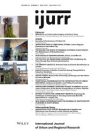The present global crisis has manifested itself in Spain with special force, but what is happening today has its roots in the recent economic and urban growth model. Whereas much has been written on the economic weakness of a model heavily based on the construction industry, little attention has been given to the internal regulations, policies, social and cultural factors in which the Spanish urban growth model was embedded. The question insufficiently addressed by current debates is therefore: to what extent is Spain’s current crisis the result of its urban economic and social growth model? In this essay I argue that the crisis in the Spanish urban growth model reveals a particular interaction of globalizing forces with national and local processes, characterized both by specific structures of economic incentives and path‐dependent cultural traits. The combination of these factors goes some way towards an explanation of the housing bubble. This specific combination of factors, however, makes the outlook for the aftermath of the housing bubble in Spain different from that experienced in the United States.
Details
Written by:
MARISOL GARCÍA
Digital Object Identifier (DOI)
10.1111/j.1468-2427.2010.01015.x
About DOI
Read full article as PDF
Read full article as HTML
See the references for this article
